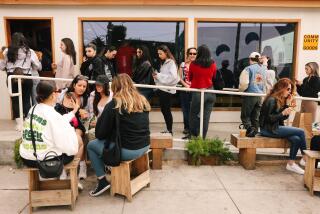Direct-trade route pays off for Seattle’s Best Coffee founder
Jim Stewart ranks high among Seattle’s coffee elite. He founded what is now Seattle’s Best Coffee in the late 1960s, when only a handful of U.S. roasters envisioned coffee as a gourmet drink.
But when he travels to Costa Rica with his wife, she is the coffee maven.
“I was born in a coffee tree,” said Luz Marina Trujillo, who hails from a coffee family in Colombia. She has worked the last 22 years turning a mediocre coffee farm in Costa Rica into one of the country’s most respected coffee estates.
Trujillo decided early that she wanted to sell directly to roasters, negotiating with them on price and quality. Direct trade has become fashionable because it cuts out a middleman — often putting more money into farmers’ hands and helping roasters forge long-term relationships across cultural boundaries.
Popular Pacific Northwest companies such as Stumptown Coffee Roasters and Caffe Vita Coffee Roasting Co. publicize their buying visits to coffee farms, sharing coffee discoveries through online photos and customer events.
Many say direct trade beats fair trade, a formal program that tries to ensure fair prices to farmers. To slap a fair-trade label on coffee, you must pay fees to a certifying agency, something the informal direct-trade model does not require.
Few had heard of direct trade when Stewart started doing it in the late 1970s, because he was tired of the mystery that some brokers created around coffee buying.
“Every time I’d buy a bag of coffee, they acted like there might never be another bag of coffee. It had the aura of a fraternity,” he said.
With a suitcase and a high school grasp of Spanish, he flew to six coffee-growing countries in Latin America and Indonesia using tickets he won in a divorce settlement from a Pan Am flight attendant.
Stewart did not tell the farmers he was coming, and was not even sure the phone numbers he had for exporters were current.
One of his first stops was Costa Rica, where he got off a bus in a rural area expecting to see a sign for the exporting company he sought. Instead, there was a town square and, luckily, a policeman who was kind enough to drive him three miles to the exporter’s office.
In six weeks, he visited Guatemala, Costa Rica, Panama, Venezuela, Colombia, Brazil and Indonesia, and formed bonds that still last.
At the time, Stewart owned a small roaster with a popular shop on the Seattle waterfront called the Wet Whisker. He sold coffee but not espresso.
He did not have the clout of a coffee powerhouse such as Folgers, or even a chain such as Starbucks or Peet’s Coffee & Tea today. But he liked the people he met and their coffee, and he started buying directly from them in 1977.
Stewart’s move into direct trade ensured his supply of high-quality coffee and helped him build a company that eventually became Seattle’s Best Coffee, which is now a chain of 350 cafes owned by Starbucks.
On a personal level, Stewart gained friendships that were held together by great coffee and gifts of Northwest salmon — and eventually, in the case of one particular Costa Rican farmer, by marriage.
Trujillo’s first taste of direct trade came at a Seattle’s Best Coffee party in Costa Rica.
Trujillo was thrilled to be invited to the party, where she met Stewart briefly. The gathering was more an occasion to shake hands than do business.
But in Boston shortly afterward, where she flew to meet more U.S. roasters at a coffee convention, she had lunch with him and they began to keep in touch regularly, talking by phone about coffee growing and roasting.
They met again in Colombia, where Stewart traveled on coffee business. He met Trujillo’s family, toured their farms, and won them over with his charm and ponytail.
Buying coffee directly from farmers is not as simple — or as dreamy — as it sounds.
Roasters wax romantic about their trips along bumpy roads to coffee plantations in the tropics, the only place coffee is grown. They love the warm weather, the welcoming people and the passion they share with farmers for great coffee.
But trading also means that the roasters have to figure out how much coffee they need, how much they will pay for it and where to store large volumes — things they paid brokers to do before they were bitten by the direct-trade bug.
Direct trade is still a young movement; most roasters continue to go through brokers, who do not seem to mind when a roaster decides to negotiate with growers directly.
“It is possible that we are losing some business, but there is still plenty of coffee to be sold,” said John Cossette, vice president at Royal Coffee Inc. in Emeryville, Calif. “If we are the importer on a direct-trade deal, we still have to charge a fee for our services.” If a roaster wants to be more involved with pricing and quality, Cossette said, “it’s all good, as they say.”
Allison writes for the Seattle Times/McClatchy.






